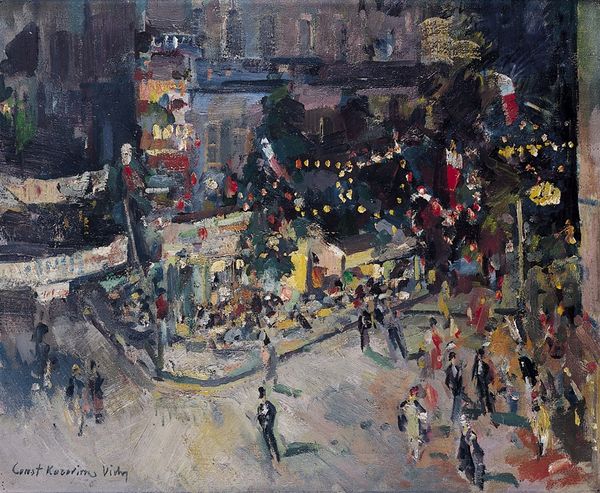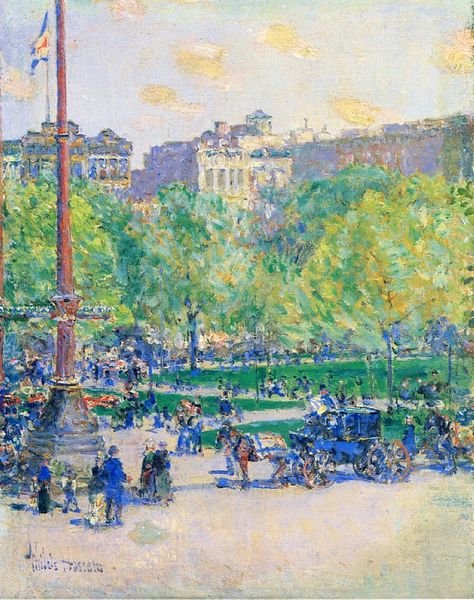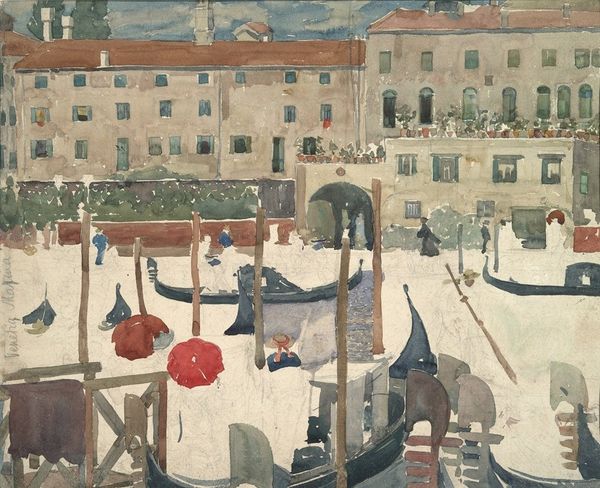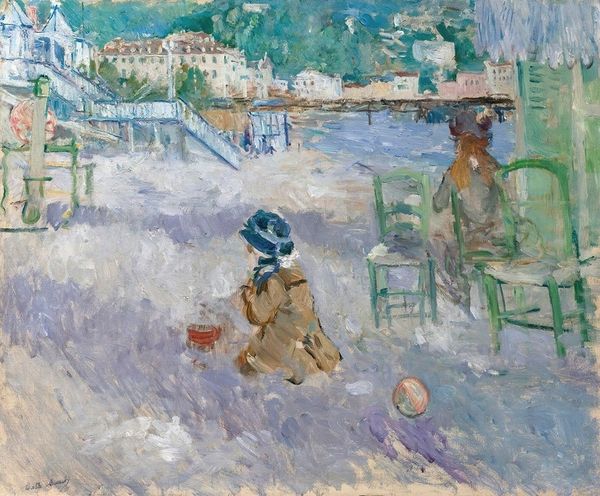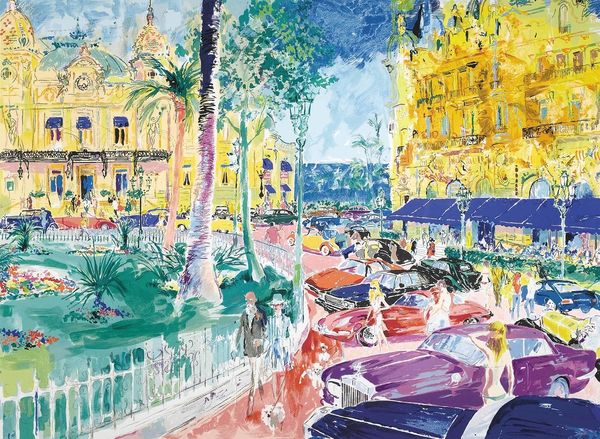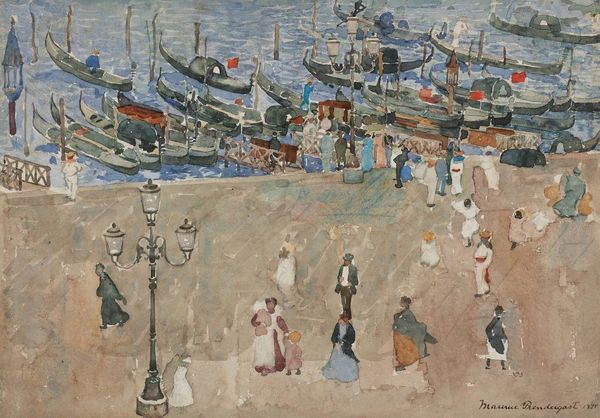
plein-air, oil-paint
#
plein-air
#
oil-paint
#
socialist-realism
#
figuration
#
oil painting
#
city scape
#
group-portraits
#
pop-art
#
cityscape
Dimensions: 50 x 76 cm
Copyright: Mikhail Olennikov,Fair Use
Curator: This is Mikhail Olennikov's "1st of May," painted in 1964. What are your initial thoughts? Editor: A rush of visual data. A multitude of figures rendered with an almost frantic energy, punctuated by bursts of red. The overall effect is strangely muted despite the subject. Curator: The sea of faces captures the collective identity so prized by Soviet ideology. How does that ideology intersect with personal identity in the work? This celebration is both orchestrated and ostensibly spontaneous. How are these tensions visualized, and what contradictions are presented? Editor: I see it in the application of the oil paint. Impasto strokes build up areas of chromatic intensity which are resolved via their formal relation to other shapes. This technique obscures any sense of individualized features and leans into the grand collective identity of a cityscape full of revolutionary citizenry, almost subsuming them into a uniform entity within the built environment. Curator: And that is such an apt term to use—"built environment"—considering how Olennikov's piece exemplifies the grand urban planning of the Soviet era. What does it mean to have public celebrations such as the May Day parade? Does this artistic representation lean towards utopian visions or propaganda? Where can we locate nuance and critique here? Editor: There’s also a certain dynamism achieved through what appears to be an open air approach. The lack of hard edges or a singular perspective amplifies this somewhat chaotic view. However, one may observe how light plays a part: as one approaches closer the red vertical planes set into the composition give way towards softer gradients, indicating light. There's that strange interplay of celebration, mass culture and individual perception at work. Curator: Perhaps it reveals the complexity in even propagandist art, as these subtle nuances allow the viewer to engage with this imagery not just on a symbolic but also deeply human level. Editor: A fitting synthesis between the historical context and formal attributes—a painting of this type would seem quite at home in today's discourse surrounding social identity.
Comments
No comments
Be the first to comment and join the conversation on the ultimate creative platform.

